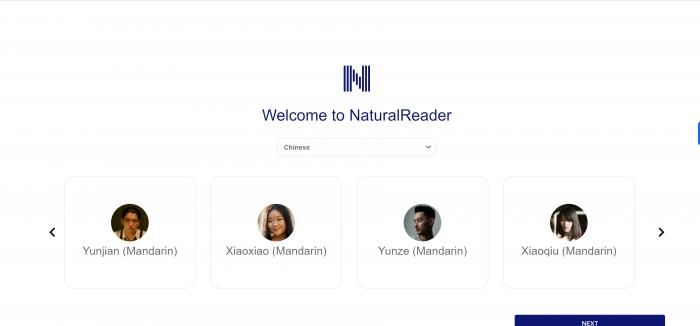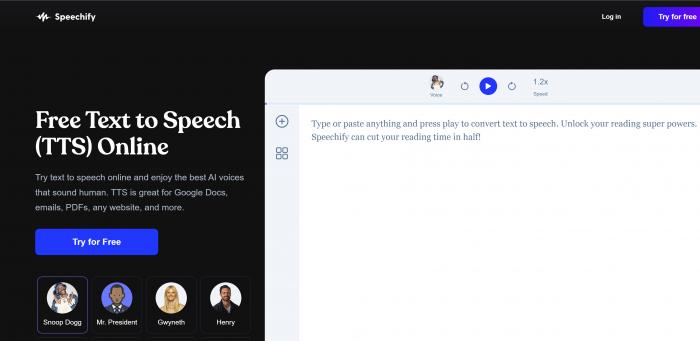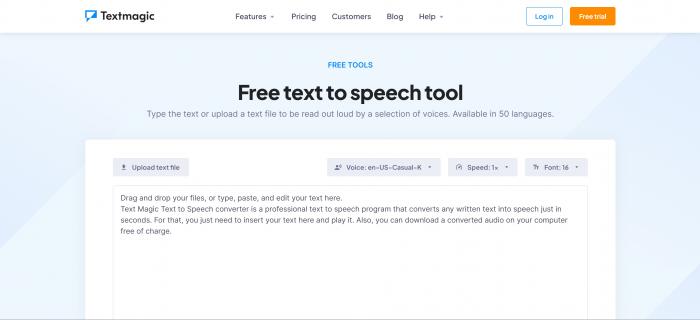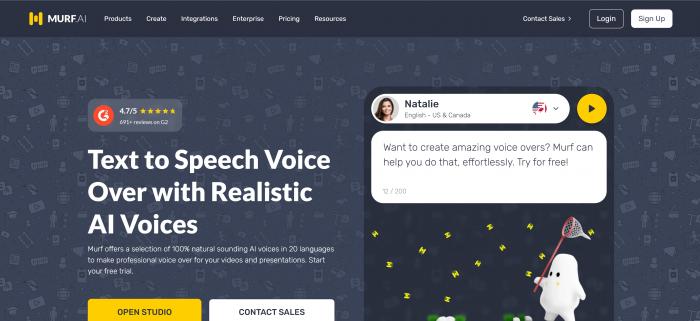Voice Beyond Words: Top 6 Text to Speech Tools of 2024
Have you ever struggled to read through long documents due to poor eyesight or simply lack of time? Imagine trying to absorb vast amounts of information while on the go, with no way to spare a moment for a quiet read. In a world where time is of the essence and accessibility is key, the concept of text to speech technology becomes increasingly crucial.
Text to speech technology offers a solution to those who struggle with traditional reading methods. By converting written text into spoken words, it provides a more accessible and efficient way to consume information. Whether you’re a busy professional looking to catch up on emails or a student juggling multiple assignments, text to speech can be a game-changer in how we interact with written content.
This article will provide a comprehensive overview of text to speech technology, exploring its benefits and the top 6 software options, impact on accessibility and education, as well as its potential in business communications. Additionally, we’ll dive into the future of text to speech, tips for improving accuracy, and the intriguing concept of voice cloning within this innovative technology. Join us on this journey of unlocking the power of text to speech.
Understanding Text to Speech Technology
Text to Speech (TTS) technology is a groundbreaking innovation that converts written text into spoken words, allowing users to listen to content instead of reading it. By utilizing synthetic voices, TTS software can vocalize digital text in a natural and human-like manner, enhancing accessibility for individuals with visual impairments or learning disabilities.
One of the key components of TTS technology is its ability to accurately interpret and reproduce the nuances of human language, including intonation, pronunciation, and cadence. This enables TTS systems to provide an immersive and engaging listening experience that simulates human speech patterns.
Furthermore, TTS technology has made significant advancements in recent years, with the development of neural network-based voice synthesis models that can generate incredibly realistic and lifelike speech. These state-of-the-art TTS systems are capable of producing high-quality audio that is virtually indistinguishable from that of a human speaker.
Benefits of Using Text to Speech Technology
Text to Speech technology offers numerous benefits that can greatly enhance the user experience across various platforms. One of the key advantages of using Text to Speech is accessibility. This technology enables people with visual impairments or reading disabilities to access and consume written content more easily. By converting text into spoken words, Text to Speech allows individuals to listen to information rather than read it, making online content more inclusive and user-friendly.

Moreover, Text to Speech can significantly increase productivity by providing a convenient way to consume content while on the go. Whether it’s listening to emails during a commute or multitasking by having articles read aloud while working on other tasks, Text to Speech technology allows users to absorb information hands-free. This can be especially helpful for individuals with busy schedules or those who prefer auditory learning.
Another benefit of using Text to Speech is improved language learning and pronunciation skills. By listening to text being read aloud, learners can better understand proper pronunciation and intonation. This can be particularly beneficial for language learners, as it allows them to practice listening comprehension and speaking skills in a natural and immersive way.
Top 6 Text to Speech Tools
Natural Reader
Natural Reader is a versatile text to speech tool that offers both online and software versions. Its unique feature includes compatibility with various document formats and the ability to adjust reading speed and voice.

Ideal for students, professionals, and individuals with visual impairments. Natural Reader provides accurate and clear speech output, making it suitable for educational purposes and business presentations. Some key features include multiple voices, proofreading, and text highlighting.
TTS Tool
TTS Tool is a user-friendly text to speech converter that supports multiple languages and voice options. This tool is perfect for content creators, students, and professionals looking to enhance their reading experience.

TTS Tool offers high-quality speech synthesis and customization options, making it a popular choice for those seeking efficient and accurate text to speech conversion. Key features include voice selection, pronunciation correction, and text formatting.
Speechify
Speechify is a user-friendly text to speech converter that offers high-quality speech synthesis in multiple languages. Its intuitive interface and straightforward functionality make it suitable for users of all levels of computer proficiency.

Speechify is perfect for students, educators, and content creators looking to convert text into audio files for educational purposes, language learning, and content creation. Key features include voice selection from a variety of options, pronunciation correction, and text highlighting for improved readability.
TTSMaker
TTSMaker is a comprehensive text to speech software that caters to a wide range of users, including writers, educators, and individuals with reading disabilities. Its unique feature includes the ability to generate speech from any text input, making it a versatile tool for various applications.

Ideal for creating audio books, podcasts, and interactive learning materials. TTSMaker offers natural sounding voices, customizable settings, and easy integration with other platforms as some of its standout features.
Textmagic
Textmagic is a versatile text to speech tool that caters to both personal and professional users. Its standout feature is its compatibility with various document formats, including PDFs, Word documents, and web pages. Additionally, Textmagic offers advanced customization options, allowing users to adjust reading speed, voice pitch, and volume according to their preferences.

Ideal for students, professionals, and individuals with visual impairments, Textmagic provides accurate and natural-sounding speech output for enhanced accessibility and productivity. Some key features include multi-language support, text formatting, and integration with other productivity tools.
Murf AI
Murf AI is a comprehensive text to speech software that provides a seamless reading experience for users across various platforms. Its unique feature is its ability to read text from any source, including websites, documents, and e-books. Ideal for writers, educators, and individuals with reading disabilities, Murf AI offers customizable settings, natural-sounding voices, and integration with popular web browsers.

With its user-friendly interface and advanced features, Murf AI is a top choice for those seeking an efficient and reliable text to speech solution. Key features include multi-language support, bookmarking, and offline access for uninterrupted reading.
Text to Speech in Business Communications
In today’s fast-paced world, effective communication is key to success in business. With the rapid advancement of technology, text to speech (TTS) software has become an invaluable tool for enhancing communication within the workplace.
Text to speech technology allows businesses to convert written text into natural-sounding speech, making it easier to convey information and messages to staff, clients, and customers alike. By using TTS in business communications, companies can ensure that important announcements, memos, emails, or even marketing materials can be communicated efficiently and effectively.
One of the key benefits of using text to speech in business communications is the ability to reach a wider audience. With TTS, businesses can cater to individuals with visual impairments or those who prefer audio content over written text. This inclusivity can help companies broaden their reach and connect with a more diverse audience.
Moreover, text to speech technology can also save valuable time and resources. By converting text into speech, businesses can streamline their communication processes, enabling employees to absorb information more quickly and efficiently. This can lead to increased productivity and improved overall communication within the organization.
Conclusion
The power of text to speech technology is truly remarkable. The ability to convert written text into spoken words has revolutionized accessibility, education, and business communications. With the advancements in text to speech software, individuals can now enjoy the benefits of having information read aloud to them, making it easier to consume content on the go.
Text to speech technology has also played a vital role in changing the way we approach learning and accessibility. Students with learning disabilities can now access educational materials in a format that suits their needs. Additionally, businesses are leveraging text to speech technology to enhance their communications, improve customer experiences, and streamline processes.
As we look towards the future, the possibilities for text to speech technology are endless. With voice cloning becoming more prevalent, we can expect to see even more personalized and engaging interactions in the digital space. Text to speech accuracy improvements will continue to drive innovation and create new opportunities for businesses and individuals alike.


